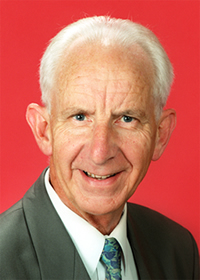84 Putting of question
-
When a motion has been moved, a question on it shall be proposed to the Senate by the President.
-
When the debate on a question is concluded, the President shall put the question to the Senate.
-
The President may order a complicated question to be divided.
-
A question being put shall be resolved in the affirmative or negative, by the majority of voices, “aye” or “no”.
-
The President shall state whether the “ayes” or “noes” have it, and if that opinion is challenged the question shall be decided by division.
Amendment history
Adopted: 19 August 1903 as SOs 121 to 125 (corresponding to paragraphs (1) to (5))
Amended: 26 November 1981, J.716–17 (reference to seconding of motion deleted from paragraph (1))
1989 revision: Old SOs 128 to 132 combined into one, structured as five paragraphs and renumbered as SO 84; language modernised and simplified
Commentary
Like SO 83, SO 84 contains elementary but fundamental rules and is one of the essential building blocks of Senate procedure. It prescribes when, and how, questions – which lead to decisions or resolutions – shall be put by the chair and how the chair will determine the result.

The requirement for motions and amendments to be seconded was removed largely due to the efforts of Senator Brian Harradine (IND, Tas) (Source: Commonwealth Parliamentary Handbook)
Apart from the modernisation of expression achieved by the 1989 revision, the only substantial change occurred in 1981 when the requirement for motions to be seconded was removed from the standing orders on the recommendation of the Standing Orders Committee. The committee considered the matter initially in its Fifth Report for Fifty–ninth Session, tabled on 31 March 1980. It recommended that the existing practices continue. When the report was debated the following year, Senator Harradine (Ind, Tas) adverted to the fundamental inequity inherent in the practice of seconding for a senator like himself without party colleagues who, having been elected on the same basis as all other senators, did not enjoy an untrammelled right to move a motion or amendment. The committee reconsidered the matter and, in its Second Report for the Sixtieth Session, adopted without debate in November 1981, recommended that the requirement be abandoned. For many years the practice had been modified not to apply to ministers and party leaders in any case, and, as the committee noted, its origins were obscure and it had been abandoned already by “a number of important legislative assemblies, including the British House of Commons and both Houses of the United States Congress”.[1] There was no sound rationale for retaining it.
Senators regularly ask for questions to be divided so that the constituent parts may be voted on separately. Presidential rulings have upheld the principle that the chair should divide a question at the request of a senator if it is capable of division, so that senators are not compelled to vote for or against a group of propositions that they would otherwise have voted differently on. See Odgers’ Australian Senate Practice, 12th edition, p.217.
It has also been ruled that the question on an urgency motion may not be divided because that would be the equivalent of amending the motion which is prohibited under SO 75 (see SO 75).
Standing order 113, relating to expedited proceedings on bills, requires that a motion containing any combination of the compound elements specified “shall be divided” at the request of any senator. This preserves the right of senators to debate those parts of the motion which have been otherwise excluded from debate by being amalgamated with the motion for the first reading of the bill or bills. For other examples of circumstances where complicated questions on legislation have been divided, see Odgers’ Australian Senate Practice, 12th edition, pp.259 and 308.